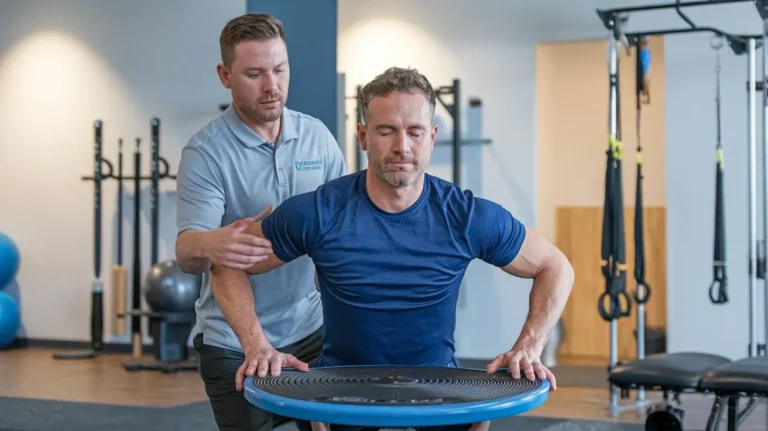Top tips to increase flexibility you must include ______________________. [aks: pe09-16]
Flexibility plays a vital role in overall fitness. It improves movement, prevents injury, and enhances performance in physical activities. If you’re looking to increase flexibility, follow these top tips for effective and sustainable progress.
1. Stretch Daily to Maintain Progress
Consistency is key in improving flexibility. Stretching daily keeps muscles limber and reduces stiffness. Whether you do a full routine or just a few moves, stay regular.
Start with Gentle Stretches
Begin with gentle stretches to avoid straining your muscles. Try seated forward bends or a gentle hamstring stretch. Gradually increase the depth of the stretch as you feel more comfortable.
Stretch Every Major Muscle Group
Don’t just focus on one area. Stretch your legs, back, arms, and neck to improve overall flexibility. A balanced approach to stretching provides even benefits across your body.
Hold Stretches for 30 Seconds
For optimal flexibility gains, hold each stretch for 30 seconds. This duration allows the muscles to relax and lengthen. Remember, deeper stretches lead to better results.
2. Warm Up Properly Before Stretching
A warm-up prepares your body for stretching. It boosts blood flow, increases heart rate, and loosens muscles. Warming up before stretching ensures a safe and productive session.
Choose Dynamic Warm-Ups
Dynamic warm-ups involve active movements that engage the entire body. Try leg swings, arm circles, or walking lunges. These exercises prepare your muscles for deeper stretches.
Focus on Large Muscle Groups
Give special attention to large muscle groups during your warm-up. Warm up your legs, shoulders, and back. These areas support most movements, making them essential for flexibility.
Warm Up for at Least Five Minutes
Keep your warm-up short yet effective. Aim for a minimum of five minutes. This time frame helps prevent injury and primes your body for more flexibility gains.
3. Practice Yoga for Full-Body Flexibility
Yoga combines stretching with strength, making it ideal for flexibility. It targets multiple muscle groups and improves balance. Regular yoga practice can significantly enhance your flexibility.
Try Beginner-Friendly Poses
If you’re new to yoga, start with basic poses. Poses like Downward Dog, Cobra, and Child’s Pose are great for beginners. These stretches gradually build flexibility.
Focus on Breathing
Breathing deeply during yoga promotes relaxation. Deep breaths help muscles release tension, allowing deeper stretches. Breathe in sync with your movements for maximum benefits.
Practice Yoga 2-3 Times a Week
To build flexibility, practice yoga consistently. Aim for two or three sessions each week. Over time, this schedule will lead to noticeable improvements in flexibility.
4. Use Foam Rolling to Release Tension
Foam rolling is an effective way to relieve muscle tightness. It breaks up muscle knots, making stretching more effective. Roll regularly for better flexibility and reduced soreness.
Roll Major Muscle Groups
Focus on areas where you feel tightness. Roll your calves, hamstrings, back, and thighs. These areas often hold tension, affecting flexibility.
Apply Gentle Pressure
Use gentle, controlled pressure when foam rolling. Avoid putting too much weight on the roller, which could cause pain. Start slowly, applying only as much pressure as feels comfortable.
Roll for 30 to 60 Seconds Per Area
Spend 30 to 60 seconds on each area to get the best results. This length of time effectively reduces tightness. Gradually, you’ll notice better flexibility with regular foam rolling.
5. Hydrate to Support Muscle Elasticity
Water is essential for muscle health. Proper hydration keeps your muscles elastic and responsive. Hydrated muscles are less likely to cramp or feel stiff, supporting flexibility.
Drink Water Throughout the Day
Drink water consistently rather than in large quantities all at once. Hydration works best when spaced throughout the day. Keep a water bottle with you as a reminder to sip often.
Avoid Excessive Caffeine
Caffeine dehydrates the body, which can impact muscle elasticity. Limit your caffeine intake if possible. Replace some caffeinated drinks with water for better flexibility.
Consume Electrolytes
Electrolytes help maintain fluid balance in your body. They are especially important if you’re active. Look for electrolyte-rich foods like bananas, oranges, and spinach, or consider sports drinks.
6. Improve Flexibility with Static and Dynamic Stretches
Both static and dynamic stretching improve flexibility. Each type offers unique benefits, so including both can boost results. Adding these stretches to your routine promotes balanced flexibility.
Use Static Stretches After Exercise
Static stretches involve holding a position. They are best for cooling down after a workout. Post-exercise stretching aids muscle recovery and increases flexibility.
Incorporate Dynamic Stretches Before Exercise
Dynamic stretches involve movement. They are perfect for warming up before exercise. Movements like leg swings and arm circles prepare your body for a full range of motion.
Alternate Between Both Types
Including both types creates a balanced stretching routine. Alternate between static and dynamic stretches to target all muscle groups. This approach enhances overall flexibility.
7. Listen to Your Body to Avoid Injury
Flexibility should feel like a gentle stretch, not pain. Listening to your body helps prevent over-stretching. If you feel pain, ease back to avoid injury.
Move Slowly into Stretches
Slow, controlled movements prevent injury. Rushing can strain muscles and lead to soreness. Take your time as you move deeper into each stretch.
Stop If You Feel Pain
Discomfort is normal, but pain is a warning sign. Stop immediately if you feel sharp pain. Never push your body beyond its comfort level, as it can lead to injury.
Adjust Stretches to Your Level
Everyone’s flexibility is different. Modify stretches to match your current level. Over time, you’ll progress safely and enjoy increased flexibility without injury.
8. Set Realistic Flexibility Goals
Setting goals keeps you motivated. Start with simple goals and gradually challenge yourself. Achievable goals make flexibility training enjoyable and rewarding.
Start with Small Goals
Begin with small, attainable goals. For example, aim to touch your toes or hold a deep squat. Small victories encourage you to keep pushing forward.
Track Your Progress
Tracking your progress helps you see improvements over time. Use a journal or take photos to measure your gains. This simple habit keeps you motivated and focused.
Celebrate Achievements
Celebrate each milestone to stay motivated. Reward yourself when you reach a new flexibility goal. Enjoying small successes makes the journey fulfilling and fun.
9. Combine Flexibility Training with Strength Training
Strength training supports flexibility. Strong muscles protect your joints and improve stability. Adding strength exercises complements flexibility for balanced fitness.
Include Bodyweight Exercises
Bodyweight exercises like squats, lunges, and push-ups enhance strength without heavy equipment. They also improve mobility, aiding flexibility.
Target Core Muscles
A strong core supports flexibility in the spine and hips. Incorporate planks, Russian twists, and leg raises. Core strength helps you achieve a better range of motion.
Strengthen Your Lower Body
Lower body strength aids balance and stability. Focus on leg exercises to support flexible hips and legs. Squats and lunges work well for this purpose.
10. Practice Patience and Persistence
Flexibility improves with time and consistency. You won’t see results overnight, so patience is essential. Stick to your routine, and you’ll experience gradual, sustainable progress.
Focus on Consistency Over Intensity
Consistency matters more than intensity in flexibility training. Regular stretching sessions lead to better long-term results than pushing too hard. Keep a steady pace for the best gains.
Take Rest Days
Your muscles need time to recover. Include rest days in your routine to prevent burnout. Rest helps your body adapt to the increased flexibility demands.
Celebrate Small Improvements
Every little progress counts. Flexibility improvement can be slow, but every inch gained is a win. Acknowledge small gains to stay motivated on your flexibility journey.

![to increase flexibility you must include ______________________. [aks: pe09-16]](https://nathealthtalk.com/wp-content/uploads/2024/10/a-photo-of-a-person-performing-a-yoga-pose-with-a-Gc4jSqnPSQiEMKz81R7_kw-eiZtLD3UTT6Cm5_eOjXb8A.webp)





